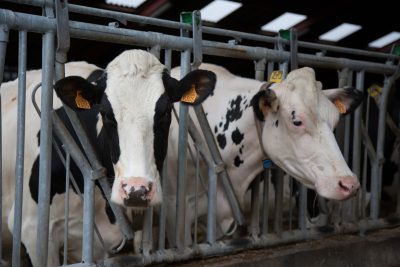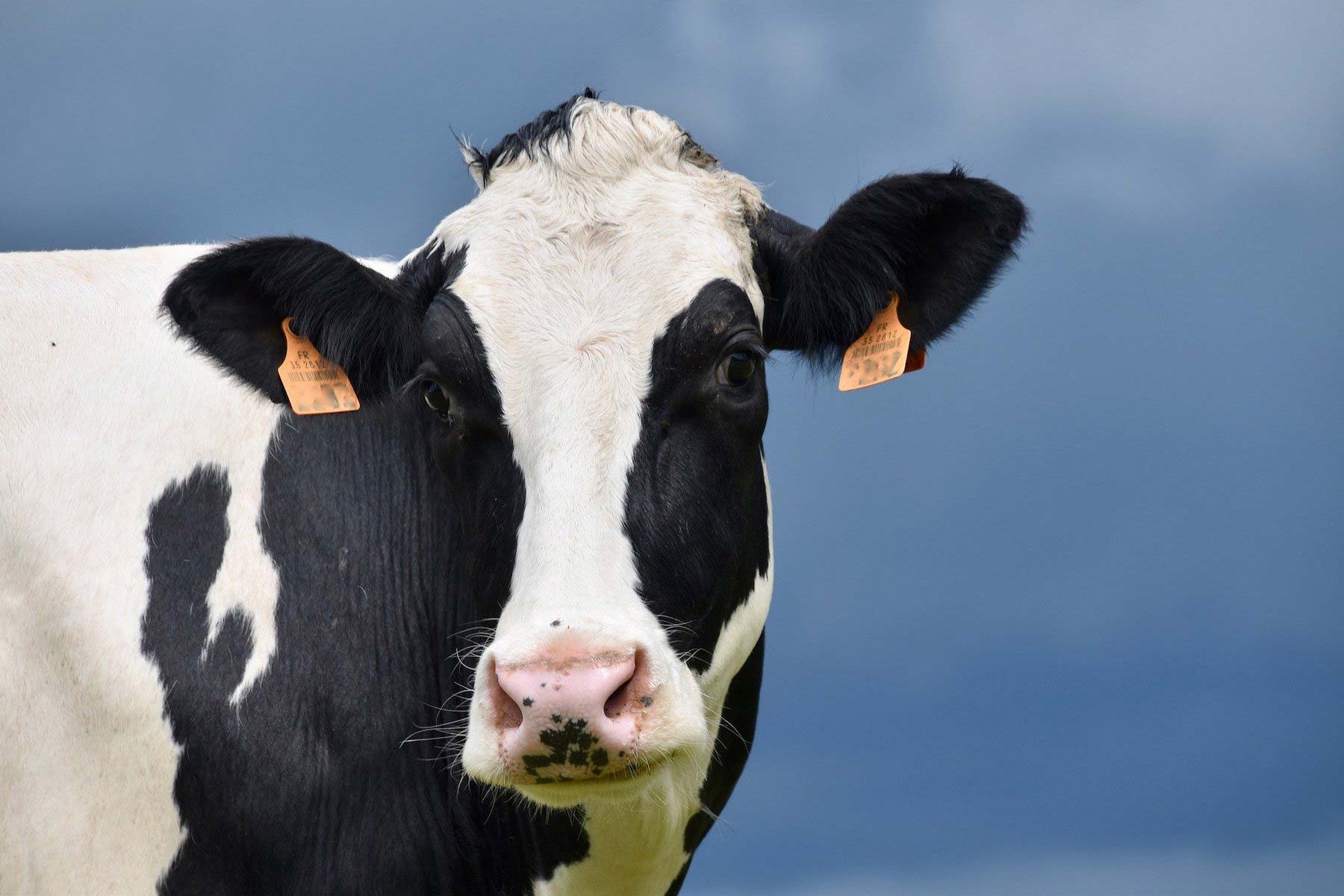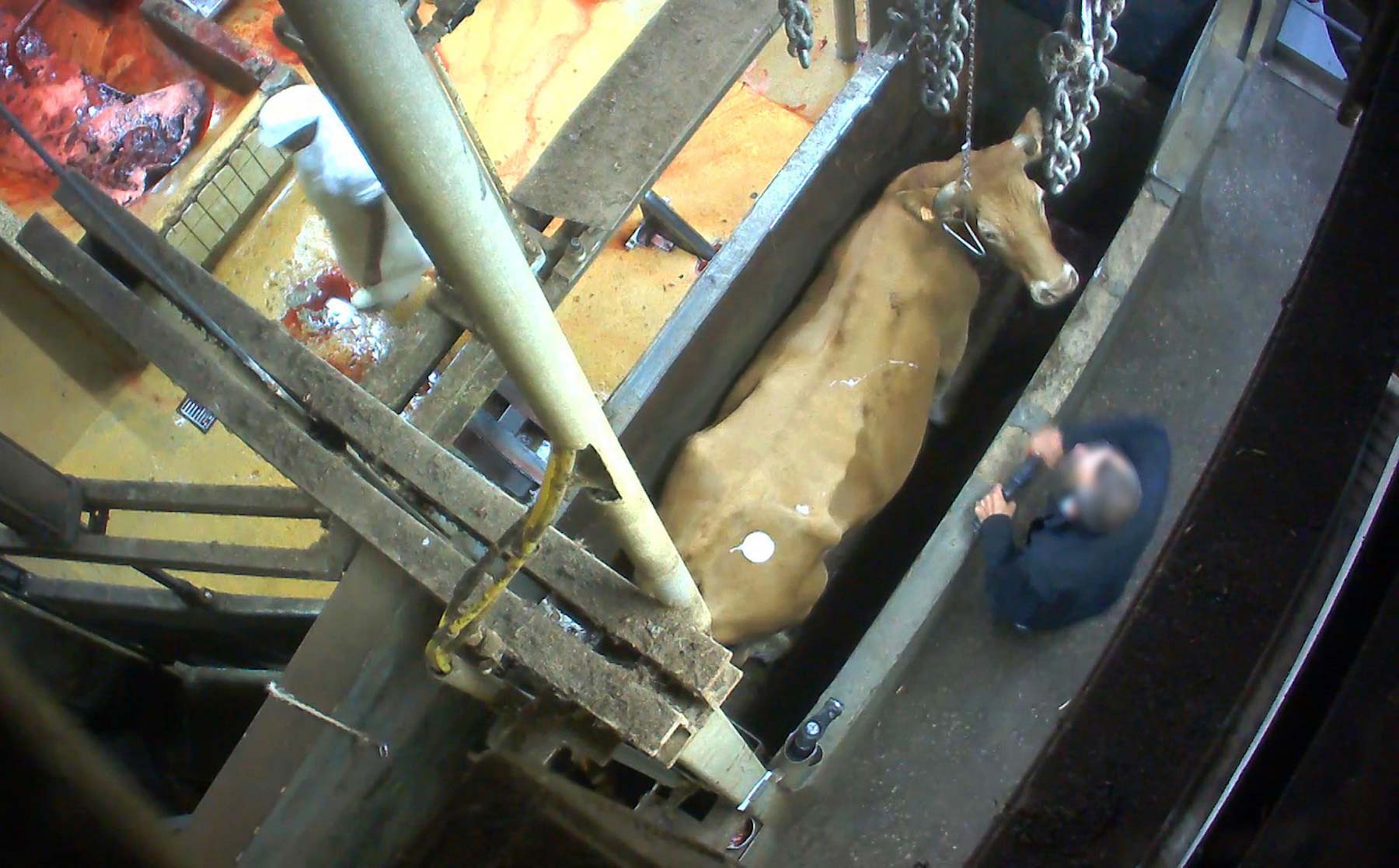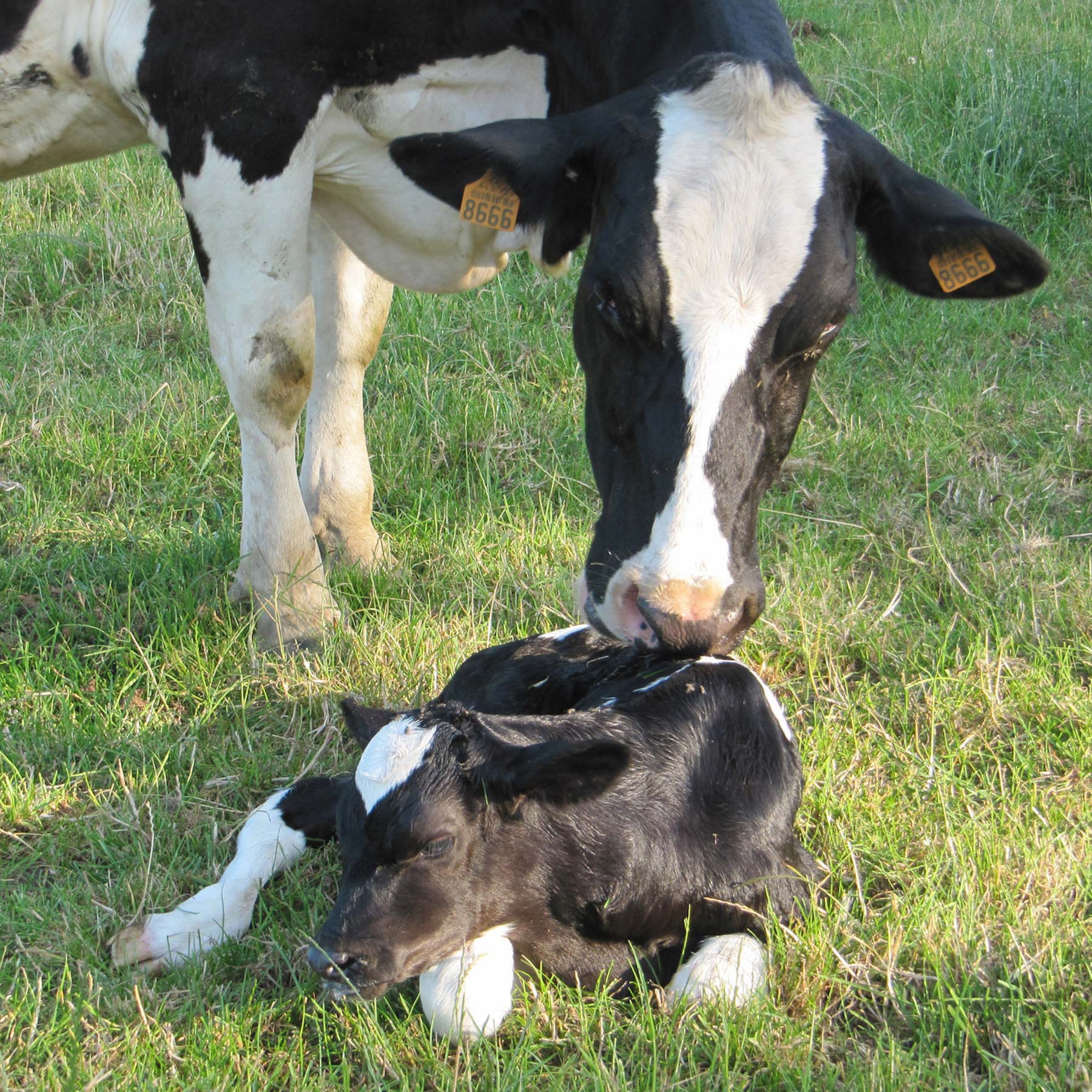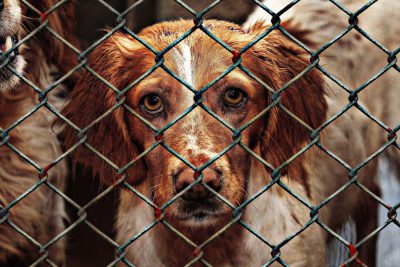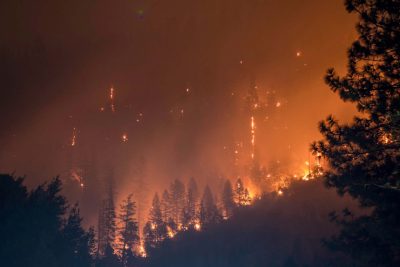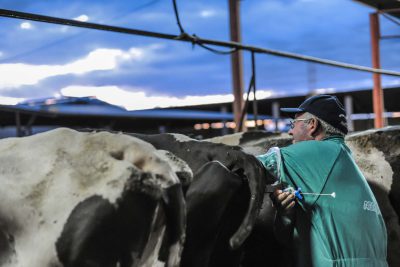Cows, like all mammals, must be made pregnant in order for them to produce milk. On dairy farms, these sensitive, sentient creatures are repeatedly impregnated by artificial insemination, only to have their newborns taken away from them at birth. After all, the calves are little more than a by-product—it’s the milk we want, not the baby. The cruelty of taking a newborn from their mother is profound, and yet this is just the beginning. Cows exploited for their milk are forced to endure such severe emotional, psychological and physiological burdens that many break down before the age of six. All this suffering for a product we don’t even need.
What Kind Of Cow Is A Dairy Cow?
There is no such thing as a ‘dairy cow’. All cows —and, of course, all mammals—produce milk for their young. If dogs were bigger and produced more, or if we could extract the milk from whales more easily, we could just as easily be drinking their milk. But we did find an animal big enough to produce large quantities and who could be domesticated, and we named them ‘dairy cow’, as if that was their true purpose all along. But cows do not produce milk for us; they produce it for their calves.
What Are The 6 Breeds Of Dairy Cattle?
Over the years, specific breeds of cows have been created through selective breeding to produce larger quantities of milk than is natural. (Million Dollar Vegan does not use the word ‘cattle’ as this suggests chattel, goods, a something instead of a someone. We call them ‘cows’.)
In the US, there are six main breeds exploited for their milk: Holstein (the black and white cows often pictured in milk marketing); Jersey (who are known for being particularly gentle creatures); Brown Swiss (perhaps the oldest breed used for their milk); Guernsey (like the Jersey, they originated on the islands in the English Channel); Ayrshire (originally bred in Scotland but brought to America in around 1800); and Milking Shorthorn (a breed of cow farmed for both their milk and their meat).
How Do Cows Produce Milk When Not Pregnant?
They don’t. Cows, like people, produce milk specifically to feed their young. They do not make it for our lattes; they make it to feed their babies.
Milk Production By Numbers
- Milk production in the US has risen slowly year on year but 2019 showed the slowest growth since 2013. In 2019, 218.4 billion pounds was produced, increasing 0.4% from the 217.6 billion pounds produced in 2018.
- More milk is now made by fewer cows. In 2019, there were 0.7 percent fewer cows than the year before. This means each cow was pushed to produce even more milk, despite the heavy biological burden of doing so.
- Despite more cows milk being produced, the number of farms is also steadily declining. There were 3,281 fewer licensed dairy operations in 2019 than in 2018.
- The amount of liquid milk consumed per capita in the US has also fallen—more than 40 percent since 1975. So, if more is being produced and less is being drunk, where is it all going? Answer: It gets dumped.
- If less is being drunk and milk is being dumped, why do farmers keep producing it? Answer: The government – via taxpayers – pays them to do so. In 2017, the industry received $36.3 billion in subsidies.
- In 2018, 42 percent of revenue for US dairy producers came from some kind of government support.
Life Of A Dairy Cow
Female cows who are exploited for their milk are kept incarcerated, often with no access to pasture, and may have inflicted on them a series of painful mutilations including branding, ear-tagging and dehorning.
Once they reach the age of fertility, they are artificially inseminated and nine months later, their calf is born. Cows are loving, nurturing mothers,and want desperately to care for their young. But the dairy industry is ruthless, and any milk drunk by the calf is milk that cannot be sold. And so the young are taken away and fed on a milk substitute. Some of the female calves join or replace their mother in the herd but life for them will be short. No animal could live long under the conditions that these poor animals endure.
Results Of Forced Milk Production
Forced milk production means forced pregnancy, over and over. There is no time to recover between pregnancies as the industry wants to keep that milk flowing. It doesn’t matter if the mother breaks down, exhausted, lame and sick under the burden of being both pregnant and milked near-constantly throughout her adult life. If she collapses, one of her female calves will take her place until she too is broken and shipped to slaughter. The burden is so huge that nearly a third of all cows farmed for their milk are killed each year in the United States. The main reasons include infertility, lameness, low production and mastitis.
• Infertility
One of the consequences of increasing milk yields in cows is that as milk volume rises, welfare decreases and the past few decades have seen a dramatic increase in infertility and reproductive disorders associated with a rising milk yield. In short, as we demand more of each animal, we push them to – and beyond – their biological limits until they simply cannot get pregnant any longer. An infertile cow doesn’t produce milk, so she is of no commercial use. At that point, she will be slaughtered and replaced. Of all those mothers killed each year, around a quarter are killed because they can no longer get pregnant.
• Lameness
Painful lameness is incredibly common on dairy farms. Within the United States the average prevalence of lameness is about 13.2 percent in Wisconsin, 30 percent in Iowa and 54.8 percent in North East US dairy herds. It can be caused either by an infection or by environmental factors such as being forced to stand on hard floors or improper nutrition. Nine percent of ‘culled’ cows on dairy farms are slaughtered because of lameness.
• Low Production
Cows who do not produce the optimal amount of milk are not acceptable to the industry. Not being productive enough is the reason given for slaughtering 18 percent of ‘culled’ cows.
• Mastitis
Mastitis is a bacterial infection that causes painful swelling or hardening of the udders. It is frequently attributed to unhygienic, cramped, and poorly ventilated living conditions, but can also be caused by trauma to the sensitive teats by milking machines. Of all the cows killed by dairy farms each year, 19 percent are killed because they have mastitis.
Mastitis is so common that the milk we drink quite legally contains pus cells.
Mutilation
Cows on dairy farms may have inflicted on them a series of painful procedures without pain relief.
• Castration
Some of the male calves will be reared for their meat. Those destined for the horrific veal trade will die before sexual maturity, and so castration is not performed, but it may be done to those reared for beef. Castration can be done physically, chemically, or hormonally.
• Disbudding
This is the removal of the calves’ horn and, if done below the age of two months, is before the horn attaches to the skull. It’s a common practice – designed to prevent animals hurting one another or farm workers—but it is not a painless one. Whatever method is used—cauterization with a hot iron, through the application of caustic chemicals, or by amputation—suffering is inevitable. The College of Veterinary Medicine at Cornell University states categorically: “All methods of disbudding and dehorning cause pain.” And yet, these procedures are commonly performed without pain relief.
• Tail Docking
Shockingly, tail docking has become common in American dairies. Farmers claim it improves cleanliness and reduces the transmission of disease but it may also be done because it makes it easier for farm workers to take milk from the cows without being hit by their tails. The Ohio Dairy Resources Center at the Ohio State University states that there may be both short- and long-term effects to the cows. “These may include acute pain associated with the docking procedure, the possibility of chronic (long-term) pain in the tail stump, reduced ability of the cow to use [her] tail for communication and other normal functions, and altered ability of the cow to avoid flies.”
• Teat Removal
Some breeds of cows, especially Guernseys, may have extra teats. Farmers often cut them off with scissors or a blade to reduce any risk of them becoming infected later on. Since mastitis is a condition most frequently associated with trauma at milking and poor living conditions, cutting off their teats to prevent infection is adding injury to injury.
Diet And Zero-grazing
Cows are ruminants. Their physiology, their nature, and their health require that they roam and graze but increasingly this basic need is denied them. Instead, they are incarcerated in zero-grazing operations and feed is brought to them. This is not the fresh grass their digestive systems need but a processed, high-protein feed, often containing soy from deforested lands, and it is designed to increase their milk yield still further.
The grain they are fed sickens the animals but, because they are given antibiotics and a tractor-trailer load of baking soda to counteract the acid, they do not usually die from this poor diet. Nonetheless feedlot acidosis is chronic, causing discomfort and sometimes life-threatening illness.
How Long Do Dairy Cows Live?
The immense physiological and emotional toll means cows on dairy farms break down at around the age of five. In sanctuaries, they could live to 20 and beyond.
Slaughtering Dairy Cows
Those who avoid meat because they dislike the killing of animals may be surprised to learn that all cows on dairy farms end up at the slaughterhouse, too. They may be trucked for long periods over long distances and in all weathers to an abattoir. There, they will be driven in, often beaten and goaded along the way, despite the lameness, infection or exhaustion that has brought them to this point. They will have a bolt shot into their heads to stun them, though efficacy is not guaranteed, and research shows that multiple shots are often taken to bring these beautiful animals down. Then—whether unconscious or not—they are hoisted by a hind leg, and their lifeblood is drained from them via a cut across their throats.
What Happens To The Calf Of A Dairy Cow?
That depends on what sex the calf is, and how best they can be exploited for money. Some of the females will follow their mothers into the cycle of pregnancy, lactation and loss of their own young. If male, they may be reared by the veal trade. Half a million male calves are raised and slaughtered for veal each year. These babies are taken from their mothers, chained in a crate, and deliberately kept weak and anaemic. They may be slaughtered from just 18 weeks old.
What Can Be Done About It?
All these abuses exist only because people buy and consume dairy. If we chose plant milks instead, we would still enjoy our coffee or shakes just as much, but cows would not be treated in this unethical and deeply disturbing way. And – since 30 million Americans struggle to digest dairy—our own health may improve, too. It’s a simple, straightforward swap but it makes all the difference in the world to cows.
Conclusion
We have long been told that milk is a natural product that does us good but this is marketing, not the truth. And when we step back from our old habits, and look afresh at this issue, the horror of it stares straight back at us. Can there be anything more disturbing than deliberately impregnating a female, killing her baby and taking the milk? Were we not all left shell shocked by the dystopian vision of The Handmaid’s Tale? Surely our hearts are big enough to extend compassion to non-human animals as well.
For some great dairy-free recipes and to find out more about eating a plant-based diet, check out our free vegan challenges and courses.
